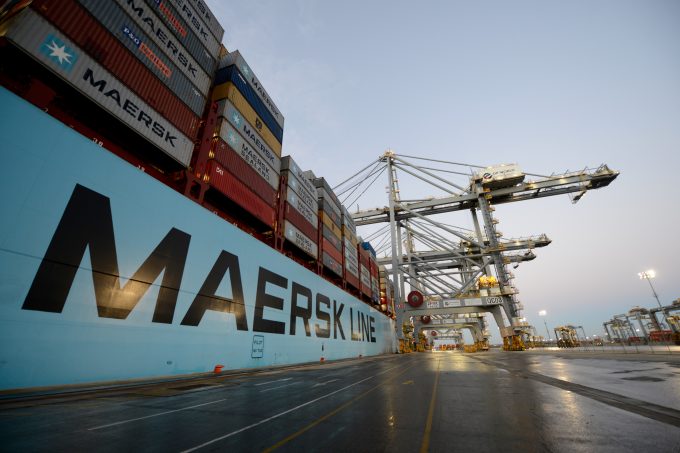Almost no large box ships available for charter, so feeders are at a premium
Almost all large containerships have been chartered until 2025, causing liner and feeder operators to ...
TFII: SOLID AS USUALMAERSK: WEAKENINGF: FALLING OFF A CLIFFAAPL: 'BOTTLENECK IN MAINLAND CHINA'AAPL: CHINA TRENDSDHL: GROWTH CAPEXR: ANOTHER SOLID DELIVERYMFT: HERE COMES THE FALLDSV: LOOK AT SCHENKER PERFORMANCEUPS: A WAVE OF DOWNGRADES DSV: BARGAIN BINKNX: EARNINGS OUTODFL: RISING AND FALLING AND THEN RISING
TFII: SOLID AS USUALMAERSK: WEAKENINGF: FALLING OFF A CLIFFAAPL: 'BOTTLENECK IN MAINLAND CHINA'AAPL: CHINA TRENDSDHL: GROWTH CAPEXR: ANOTHER SOLID DELIVERYMFT: HERE COMES THE FALLDSV: LOOK AT SCHENKER PERFORMANCEUPS: A WAVE OF DOWNGRADES DSV: BARGAIN BINKNX: EARNINGS OUTODFL: RISING AND FALLING AND THEN RISING

Once the 2M Alliance ends in January 2025, reducing shared capacity, an independent Maersk Line will be significantly weaker than its partner MSC, as well as the Ocean and THE alliances, according to Linerlytica’s commentary, released on Monday.
Linerlytica notes that the three alliances currently account for 97% of the capacity on Asia-Europe trades and 86% on the transpacific.
“The planned split of the 2M would significantly alter the alliance landscape in the next two years. MSC is expected to operate independently, given its large orderbook (133 ships for over 1.8m teu) that would replace Maersk’s current vessel contribution.
“An independent Maersk network will be significantly weaker than MSC, as well as the two rival alliances, and it would have to form alternative vessel-sharing agreements (VSAs) in order to match the network coverage of its rivals,” Linerlytica analyst Tan Hua Joo told The Loadstar.
Mr Tan said: “Maersk already cooperates with Zim and has done the same previously with SM Line, so can certainly cooperate with smaller carriers. However, its options are limited to the mid-sized carriers, such as Wan Hai, Zim and SM Line, because the smaller carriers like SeaLead, TS Lines and CULines do not have regular service networks, while PIL no longer operates in the east-west markets.
“A VSA with some or all of the Ocean and THE alliance carriers is not the same as Maersk joining those alliances. Such VSAs would be much more limited in scope and only cover specific services and routes. Cross-alliance arrangements are very common; for example, Evergreen has VSA agreements with THE Alliance carriers even though it is a member of the Ocean.”
And Linerlytica believes the 2M break-up will trigger another round of market instability as Maersk and MSC jostle for pole position on the east-west routes.
Comment on this article